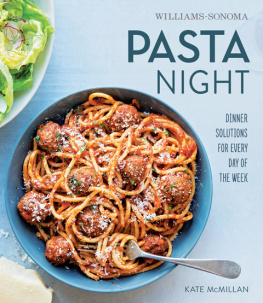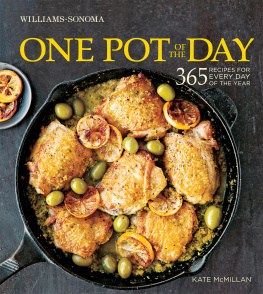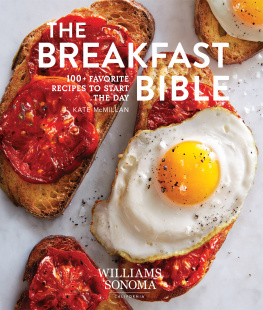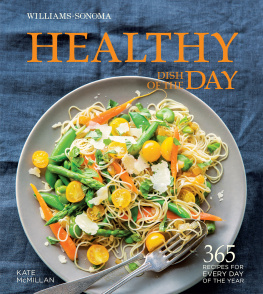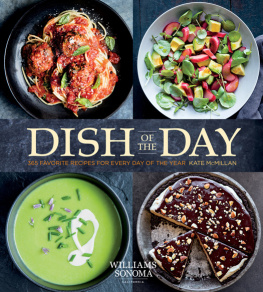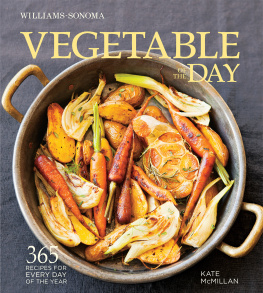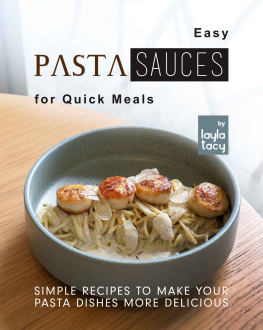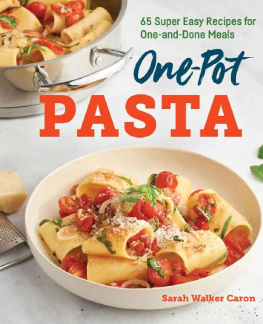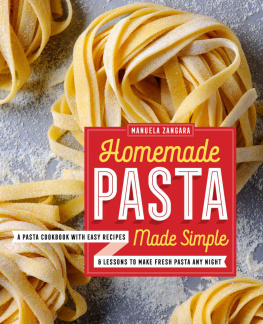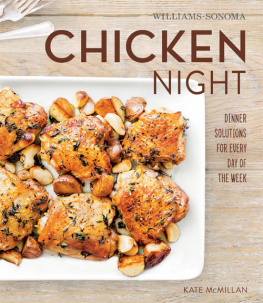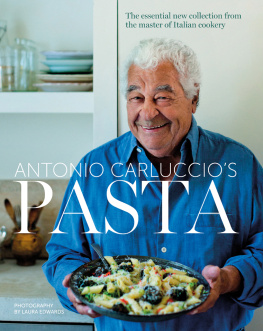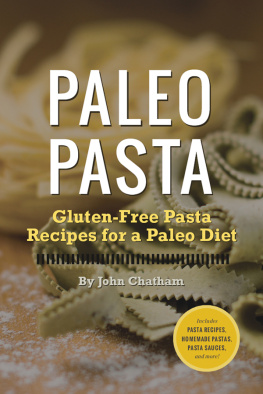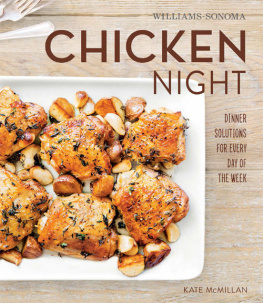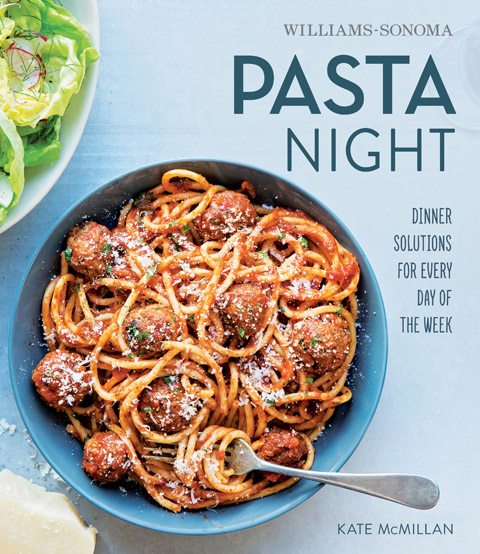PASTA
NIGHT
KATE McMILLAN
PHOTOGRAPHS BY ERIN KUNKEL



PASTA FOR DINNER
Versatile, family-friendly, and deliciouspasta has everything going for it. Plus, because pasta dishes seldom call for more than a handful of ingredients, a saut pan, and a pot of boiling water, they move quickly and easily from the stove top to the table, making them the perfect choice for cooks with busy lives.
Pasta is the ideal dish for a family weeknight supper or a Saturday dinner for company. It can be a light tangle of tagliatelle tossed with just a vegetable or two and a scattering of herbs or a hearty plate of pappardelle dressed with a slowly simmered pork rag. It can even be prepared in advance: assemble a baked pasta a day or even weeks ahead, refrigerate or freeze it, and then slip it into the oven to bake just before your guests arrive.
In these pages, youll find dozens of appealing recipes, a wealth of valuable tips, and inspired ideas for putting together meals with pasta at the center. There are recipes for vegetarian, meat, and seafood pastas, for baked pastas, and for low-fat and dairy-free pastas. For a casual family dinner, you might serve spaghetti and meatballs. When guests are at the table, it is easy to introduce such special ingredients as fresh salmon, creamy burrata cheese, or homemade bread crumbs. You can even make most recipes gluten-free by using dried pasta made from brown rice, corn, or quinoa instead of wheat. Youll also find a carefully assembled selection of sides and salads to complement whichever pasta you choose.
Finally, pasta night is all about variety. A broad range of sauceslight and lean, rich and cheesy, tomatoey, creamy, meaty, vegetariancan be matched with an equally wide array of pasta shapes and sizesthin strands, ribbons, tubes, short and curved, short and straight, ridged and smoothso youll never run out of ideas for dinner. In other words, there is a dish to satisfy every pasta lover, young or old, finicky or easygoing, traditional or modern. But perhaps the best part of pasta night is how quickly and easily the meal comes together, leaving both the cook and the diners more time at the table.
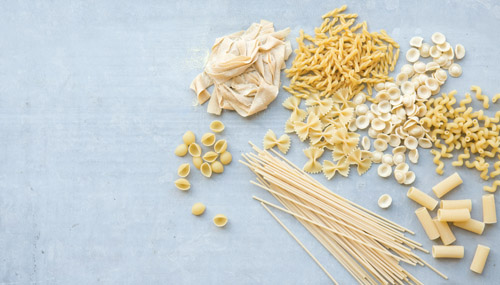
ANATOMY OF A PASTA DISH
A pasta dish is made up of two basic components, the pasta and the sauce, which must be thoughtfully chosen to complement each other. Use these tips to help select the perfect marriage of pasta and sauce and some ideas for topping the finished dish.
PASTA
All pastas can be divided into two basic types, dried and fresh. One is not better than the other, but rather each has its own role in the pasta repertoire. Dried pasta has a chewy, hardy texture with a slightly rough surface, while fresh pasta is soft, silky, and moist. Keep packages of your favorite dried pasta shapes on hand for a quick meal. Because fresh pasta is perishable, purchase it or make it no more than a day in advance of serving.
SAUCE
Sauces can be heavy or delicate, fluid or chunky, rustic or refined. A rich sauce, such as a cream-based Alfredo, should just barely coat the pasta, while a tomato-based sauce, such as amatriciana , can be applied more generously.
TOPPINGS
A dusting of grated Parmesan cheese, a drizzle of extra-virgin olive oil, a sprinkle of flaked sea salt or red pepper flakes, a scattering of buttery bread crumbs or chopped herbseach of these toppings can heighten the flavors of a pasta dish and elevate the final result.
PAIRING PASTAS AND SAUCES
Different dried pasta shapessmooth or ridged, long or short, thick or thincapture and absorb sauces differently. For example, the craters and curves of the larger shapes, such as fusilli, rigatoni, or ziti, are designed to trap chunky, rustic sauces, while small shapes, like pennette, typically marry well with smooth sauces, such as pesto. Long, thin strands also mate well with fluid mixtures, while ribbons, such as fettuccine, can handle a heavier sauce. Delicate and porous fresh pasta is ideally matched with rich sauces made from butter or cream.
When pairing a pasta shape and a sauce, always keep this basic tip in mind: large pieces of protein or vegetable pair better with large pasta shapes, such as rigatoni or ziti, while thinly sliced, more tender foods, like asparagus or mushrooms, are better suited to a thin strand or ribbon pasta, such as spaghetti or tagliatelle.

PASTA PRIMER
Making a pasta dinner any night of the week is quick and easy with just a few common kitchen tools (see right), a little prep work, and some everyday kitchen skills. Here are some guidelines to guarantee success every time.
THE RIGHT TOOLS FOR THE JOB
LARGE POT Choose a tall, narrow pot large enough to accommodate 56 qt (56 l) water comfortably, with plenty of room for the pasta to cook at a rolling boil without sticking together.
LARGE COLANDER Look for a sturdy colander with feet, so it can be placed in the sink for hands-free draining.
METAL TONGS & WOODEN SPOON Both tools are ideal for stirring and serving pasta. Tongs work best for dishes featuring long noodles, such as spaghetti, while a long-handled wooden spoon is handy for stirring sauces and serving short noodles or pasta shapes.
BAKING DISH An ovenproof dish that is also beautiful is a one-pot solution for baked pastas. Dont forget to protect your dining table from the heat of the dish with a trivet.
CHEESE GRATER A box grater, which allows you to grate and shred cheeses into a variety of different consistencies, is great for kitchen use. A handheld grater is nice to have when you want to pass around a wedge of cheese for grating at the table.
STOCK YOUR INGREDIENTS Always keep an array of basic ingredientsdried pastas, olive oil, olives, capers, anchovies, artichoke hearts, onions, garlicin the pantry or refrigerator. If time permits, make a trip to your local farmers market or Italian deli to pick up a few special ingredients, such as a wedge of Italian-imported Parmesan cheese, seasonal fresh vegetables and herbs, or fresh pasta.
MATCH YOUR PASTA AND SAUCE to make sure your pasta and sauce will complement each other.
PLAN AHEAD Set out everything youll need for the recipetools and ingredientsbefore you start cooking, then prep any ingredients and put the water on to boil. Never add the pasta to the boiling water until you are sure the sauce and any toppings are ready or nearly ready for serving. That way you wont end up with cooked pasta that has sat too long and clumped together.
SEASON FROM THE INSIDE To ensure a well-seasoned pasta dish, salt the pasta cooking water until it is almost as salty as seawater. Always use plenty of water (56 qt/56 l for every 1 lb/500 g of pasta) and make sure it is at a full rolling boil before you add the pasta.
ACHIEVE AL DENTE PERFECTION Pasta is best cooked al dente, literally to the tooth in Italian, which means the pasta noodle or shape should be tender but still firm to the bite. If using dried pasta, follow the package instructions, then sample a piece 12 minutes before the suggested cooking time is reached. If using fresh pasta, cook for the minimum amount of time indicated in the recipe, then sample a piece.

